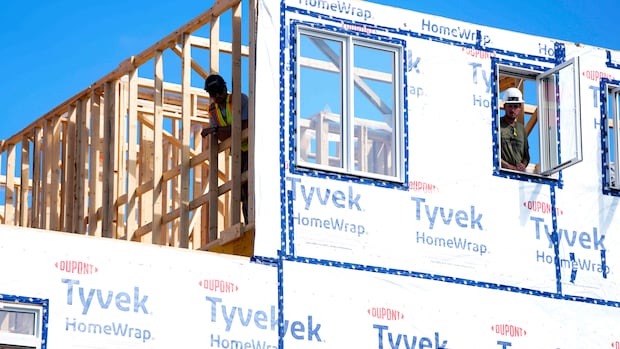Like Sweden, Japan and the U.S. before it, Canada will start experimenting with scaled-up factory-built housing next year — and it has plenty of lessons to learn from countries where the industry has already matured.Build Canada Homes, the federal government’s newly launched homebuilding agency, aims to fund the construction of 4,000 modular homes on federal land across the country starting next year. The public-private project — currently limited to six cities — could eventually scale to build 45,000 homes, according to Ottawa’s announcement. That’s only a sliver of the 4.8 million homes that Canada Mortgage and Housing Corporation says will need to be built by 2030 to restore housing affordability in this country, but the federal government hopes prefabricated homes will play a crucial role in alleviating the housing crisis.Canada’s modular housing industry is relatively nascent compared to other countries around the world where factory-built homes — touted as speedy, cost-efficient, and more sustainable than traditional construction methods — are increasingly gobbling up market share.A modular housing unit in the Marpole neighbourhood of Vancouver is pictured on Oct. 1, 2019. (Ben Nelms/CBC)The majority of housing in Sweden is built with prefabricated elements. Japan’s own prefab industry is expected to be worth over $23 billion US by 2030, according to market research. And densely populated Singapore is home to huge modular buildings of nearly 1,000 apartments.Yet for every success story, another country has failed to scale modular housing to meet affordable housing needs, say housing experts and economists who spoke with CBC News. Canada, with its own unique set of housing-related challenges, has much to learn from the achievements and the mistakes of its peers.Lessons from around the world”Building culture in Canada, and I would say in North America, is mostly related to onsite construction … and we’re still really linked to that,” said Carlo Carbone, a professor of environmental design at the University of Quebec in Montreal who has done extensive research on prefabricated housing.By contrast, Japan has a long history of modular housing that is partly linked to the country’s high earthquake risk, with pieces designed to be easily replaced, he said. And Sweden’s prefabricated housing industry has been around since the 1940s, with the sector now highly standardized and co-ordinated across supply chains.WATCH | Why modular housing could help solve Ontario’s housing crisis: :How modular housing could help solve Ontario’s housing crisisOntario’s housing crisis has been an ongoing issue for years, and some experts say modular housing could play a crucial role in addressing the problem. The prefabricated buildings are built in factories and assembled on-site. CBC’s Ali Chiasson has more.When it comes to design and execution, the two countries serve as a kind of North Star for prefab builders around the world, including in Canada.”We’ve looked to Sweden both for their technology and automation, their building techniques, and also to other countries like Japan that are quite advanced,” said Lesley Herstein, the strategic partnerships manager at Assembly Corps, a Toronto company that designs and builds prefabricated wood buildings. Assembly recently bought equipment from Swedish firm Lindbäcks, a world leader in modular building, and has enlisted the company’s help as it builds a new factory in Toronto.In researching how and why other countries with successful modular housing industries built up their sector, Herstein said most had “a lot of demand for affordable housing,” or housing that was necessary to support a population growth spurt, such as Sweden’s post-war baby boom.LISTEN | Prefabricated homes have been around for decades: :Cost of Living9:07How fab is prefab?To help solve the housing crisis, the new federal government is pledging $25-billion in loans to boost the prefabricated homebuilding industry. But building homes in factories and assembling them on-site is an idea that’s been around for decades. Jennifer Keene explores why this time — might be different.”The federal government [is] recognizing that there’s that level of need, and that something has to be jump-started in order for that housing to be built to the extent and scale that we’re talking about,” she said.Still, for every success story, there’s another instance in which a national modular housing strategy failed to take off. The United States developed a program at the end of the 1960s called Operation Breakthrough, a brainchild of the Housing and Urban Development Department that was ultimately a failure.The program was meant to improve housing affordability for low-income families after the postwar population boom and to demonstrate the value of prefabricated housing. But it failed to scale. Some of the projects struggled with costs and would not have produced housing that was, in fact, affordable.More recently, start-up companies that promised to revolutionize the housing industry in the U.S. and U.K. market have filed for bankruptcy, citing a wide range of reasons — from pandemic-related delays to over-regulation to a negative association with this particular style of housing.”In areas where it has failed, I think it’s always linked to this idea of bad design. And we have to avoid another era of connotations of cookie-cutter designs that just are similar and boxy and that nobody wants to really live in,” said Carbone.LISTEN | How can Canada solve its affordable housing crisis? :1:02:41Housing SolutionsCanada’s housing crisis has left many people struggling to find affordable places to live, whether renting basement apartments, living with roommates, or waiting years for public housing. The federal government has announced a new agency, Build Canada Homes, with $13 billion set aside to supercharge the construction of affordable units. But will it work, and what other ideas could make housing more accessible? To take your questions on solutions to Canada’s housing shortage, Just Asking was joined by Brian Doucet, Associate Professor in the School of Planning at the University of Waterloo, and Randall Bartlett, Deputy Chief Economist at Desjardins.’This is not some sort of panacea’Meanwhile, New Zealand’s KiwiBuild program — launched in 2018 to respond to demand from first-time home buyers — fell far short of its building targets and missed many of its deadlines, with only 2,300 units out of the envisioned 100,000 units having been built by the end of 2024. The program ended that October.”I think that KiwiBuild provides a cautionary tale that this is not some sort of panacea — modular homes — for solving all of our housing affordability problems,” said Randall Bartlett, deputy chief economist at Desjardins. Modular homebuilding can be more efficient, and it’s used in some aspects of homebuilding right now, Bartlett added.But in New Zealand’s case, the program “was never able to build the housing to nearly the scale of the ambitious targets that they set for themselves — in fact, a fraction of the original ambitious targets.” There were issues with the quality of housing, and there wasn’t necessarily demand for modular builds, he said.The units that emerge from Build Canada Homes will help low-income families who need affordable housing. “You just have to be careful not to have the government [be] too heavy-handed,” said BMO chief economist Douglas Porter, warning it could discourage new investment in the housing sector.Indeed, Canada’s modular housing industry will face its own unique set of challenges. The country’s size will make transporting large units across long distances more difficult, and interprovincial trade barriers — reducing them is a work in progress — will contribute to the time and cost.WATCH | Inside Montreal’s prefabricated units for homeless people: :Inside Montreal’s 1st modular units for people waiting for social housingThe site in Montreal’s Côte-Des-Neiges—Notre-Dame-De-Grâce borough includes 27 rooms with round-the-clock support services. The project aims to provide vulnerable people with a stepping stone to permanent housing.”A lot of the pieces of what Build Canada [Homes] is trying to do already exist in different examples across the country,” said Brian Doucette, an associate professor in the School of Planning at the University of Waterloo. There are existing prefabricated housing projects across Canada, from a recent project in Montreal that aims to provide housing for the homeless population, to a newly completed public housing project for families in rural Nunavut. But some initiatives have also faced pushback at the local level.”If we can do thousands of these various kinds of non-market and genuinely affordable housing developments or units across the country, then we can have this parallel system of housing that is actually responding to residential needs — not just what the market finds most profitable to build,” Doucette said.
Wednesday, 8 Oct 2025
Canada – The Illusion
Search
Have an existing account?
Sign In
© 2022 Foxiz News Network. Ruby Design Company. All Rights Reserved.
You May also Like
- More News:
- history
- Standing Bear Network
- John Gonzalez
- ᐊᓂᓈᐯᐃᐧᐣ aninâpêwin — Truth
- Creation
- Beneath the Water
- Olympic gold medal
- Jim Thorpe
- type O blood
- the bringer of life
- Raven
- Wás’agi
- NoiseCat
- 'Sugarcane'
- ᐅᑳᐤ okâw — We remember
- ᑲᓂᐸᐏᐟ ᒪᐢᑿ
- This is what it means to be human.
- Nokoma
- Kanipawit Maskwa
- Native American names










